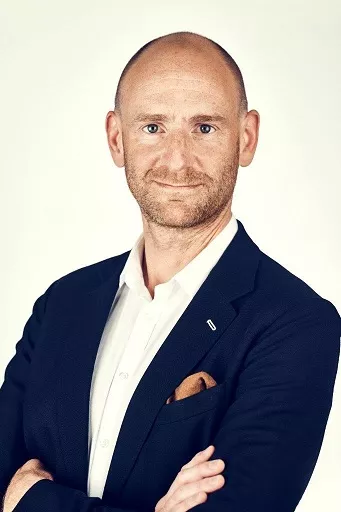U/NORD: “Sustainability is a comprehensive task”
Written by journalist Lene Rimestad
Being sustainable as a school and educating students to think and work sustainably is the goal for U/NORD. The school is not as far along as the management and staff dream, but they want sustainability to be part of the school's strategy.
Teachers and students have already started talking about and working with sustainability. And Deputy Director of U/NORD Adrian Tresoglavic sees a great interest in sustainability among the almost 14,000 students and course participants and around 650 employees at the eight different educational institutions in North Zealand.

“But we haven't gotten as far with sustainability as we dream,” he says.
U/NORD runs high schools, vocational schools and offers many other educational programs. In January, the educational institution will start thinking more strategically about how it can contribute to a more sustainable society.
“The development is largely self-driven because everyone is so motivated,” says the Deputy Director. “All our students or trainees will hear about or work with sustainability to a greater or lesser extent during their education.”
One example is in bricklaying, where both recycling of materials and sustainable construction are part of the training program.
Intangible
But U/NORD wants sustainability to be part of the educational institution's strategy.
“The concept of sustainability covers so much and it can be quite intangible, so it can be a barrier for some to work strategically with,” says Adrian Tresoglavic.
From his management perspective, he sees working with sustainability as a very comprehensive task. Among other things, the financial perspectives and the effects of sustainability require careful consideration before decisions are made.
“We've struggled with it because it's neither easy nor straightforward,” he says.
As an example, the Deputy Director mentions how it can be both costly and difficult to change older buildings to make them more sustainable. On the other hand, a new school in Elsinore can be planned more sustainably. But even that requires preparation and financial consideration.
“Sustainability is one of the basic elements in the requirements for new buildings, so it forces us to think climate-friendly and sustainable, but we also want to make sure that the physical environment promotes sustainability for students and teachers,” says Adrian Tresoglavic.
The ideas for a better physical environment also have to fit the economic realities, and that's not always easy.
The strategy
The planning of the new school in Elsinore is in full swing, and the first major step towards an actual sustainability strategy will be taken at a management seminar in January. The school's 40 leaders will be invited to discuss sustainability: what the ambition for the school should be and how it can be executed.
“We need to find goals that we can succeed with and that give good energy - in both senses of the word,” says Adrian Tresoglavic with a smile.
He hopes that after the seminar there will be both realizations and ambitions so that he and the rest of the management team can develop an actual strategy.
“Like everyone else, we want to be a sustainable school because we believe that it is important to live up to the SDGs' intention that we, the people of the world, leave the earth in a better state than we found it,” says Adrian Tresoglavic.
Double task
The task is twofold because an educational institution can work in two arenas. Firstly, schools themselves can become more sustainable: for example, by having sustainable buildings, vehicles and consciously low resource and energy consumption from canteen to photocopier.
Secondly, a school can equip students with the skills and awareness to work with sustainability,
“We need to educate young people to be sustainable citizens because there is a huge potential,” says Adrian Tresoglavic.
For example, when an apprentice bricklayer leaves school with sustainable knowledge and awareness, he or she can pass that knowledge on to both their master craftsman and to customers, and that can have a knock-on effect.
“If we send a student out into society with that knowledge, that student might influence many other people to change their behavior,” he says.
As an educational institution, U/NORD is good at creating a framework for this development, according to the Deputy Director, but it can also get better at it.
“We need to listen to students today to be able to cope tomorrow. We need to let go of what we learned in the past in order to become sustainable, and we want to do that,” says Adrian Tresoglavic.
Facts about U/NORDU/NORD offers, among other things, a vocational 10th grade, upper secondary education such as HHX, HTX and STX, courses, commercial and technical vocational training and continuing education. The education portfolio is offered from locations in Frederikssund, Helsingør, Hillerød and Lyngby. U/NORd has approximately 650 employees and 14,000 students and course participants. |



